IN-DEPTH |
On Sept. 12 at about 6:30 in the morning, a cow named Red gave birth to a calf in the pen next to the Ozarks Technical Community College Ag Education Center in Nixa. Rob Flatness, head of the ag program, named it Richie, in honor of the Richwood Valley Campus that since 2019 has housed the ag school, one of the fastest-growing programs at OTC.
The Nixa campus allowed for all kinds of expansion in plant and animal science offerings, including the opportunity to study sheep and cattle that graze in pens on the edges of the property.
As the program expanded, so too did its popularity and enrollment. In 2016, there were just 65 OTC ag students. This semester, there are 144. They included fifth- and fourth-generation Missouri farmers, a rodeo clown, an aspiring zookeeper and a future first-generation farmer who’s eyeing land northwest of Anchorage. They were among the 13 students who tended to Richie while he was tagged and banded in the back of a four-wheeler during the first few minutes of a livestock management class.
“Welcome to the herd, Richie,” said John Nathan, an OTC animal sciences student and volunteer at the Dickerson Park Zoo. Nathan said staff there told him to enroll in the program at OTC because many of the skills he would learn studying livestock in Nixa could help him on his path to becoming a zookeeper in Springfield. Nathan said he had no idea the ag education center existed until they told him about it.
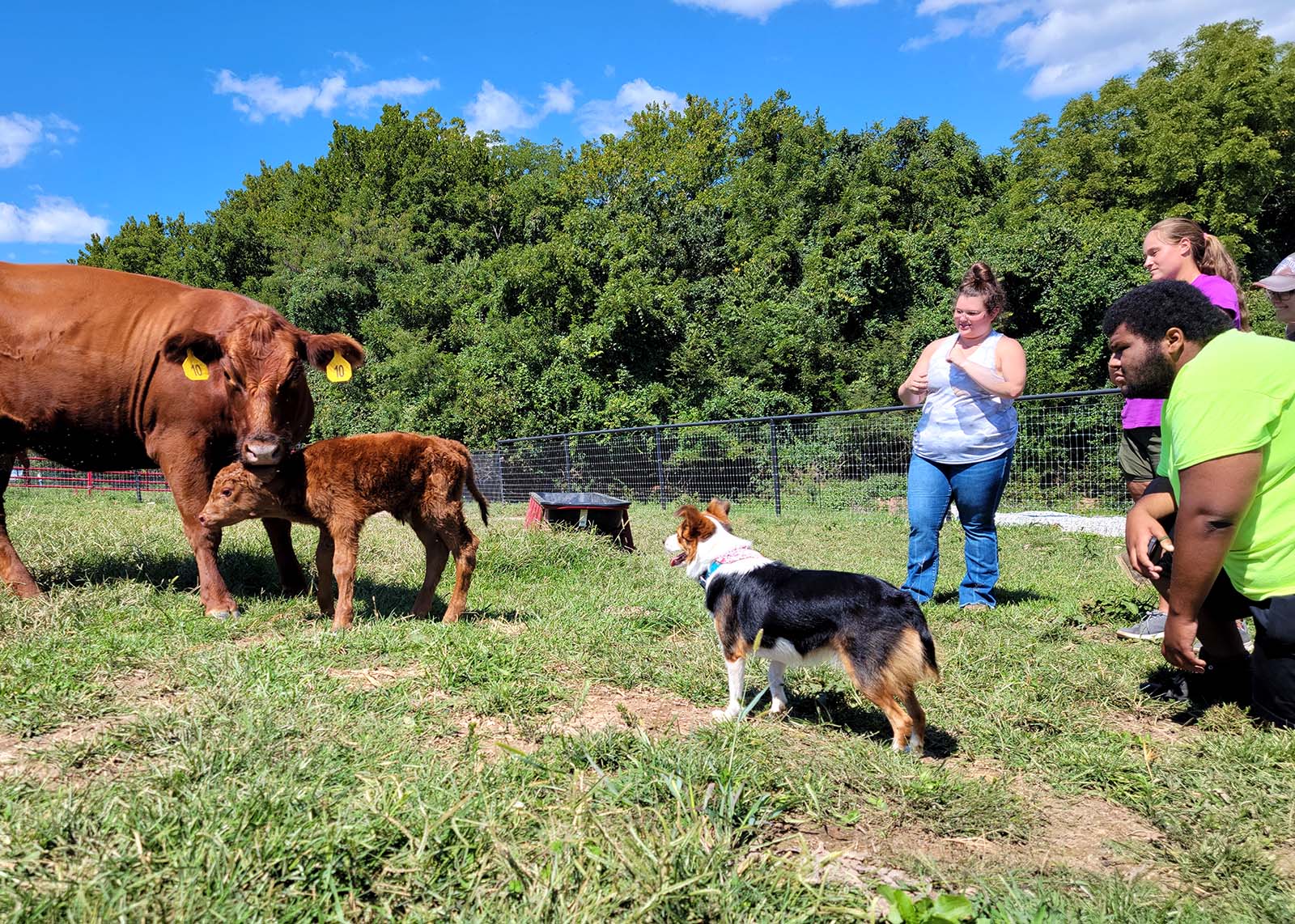
“I was amazed,” Nathan said. “I was beyond amazed, because I went to the downtown campus for a while, and I was like, ‘Oh this is cool.' But then once I got here to actually see that they actually have a farm — they've got sheep, cattle. It was really an eye-opener. I was like, ‘This is awesome — they've even got a greenhouse, geez.’ So I was beyond impressed. I still am amazed at this whole operation they have going on because they're successfully breeding cows and sheep. They're doing something right.”
OTC figures mirror recent upswing in two-year ag program trends
College enrollment figures worsened across the board during the pandemic, but enrollment in agricultural education programs at two-year schools recently exploded nationwide. In the fall of 2020, 28,777 students were enrolled in ag and ag-related programs, according to the National Student Clearinghouse Research Center. By the fall of 2021, an estimated 40,513 were — a 40.8-percent increase from one year to the next. At OTC, enrollment figures steadily climbed during the pandemic even as they dipped across the U.S.
Ag ed enrollment has grown swiftly over the past three school years. In 2020, 93 students were enrolled in programs at OTC’s Agriculture Training Center. In 2021, 119 enrolled. It's grown about 15 percent in the past year.
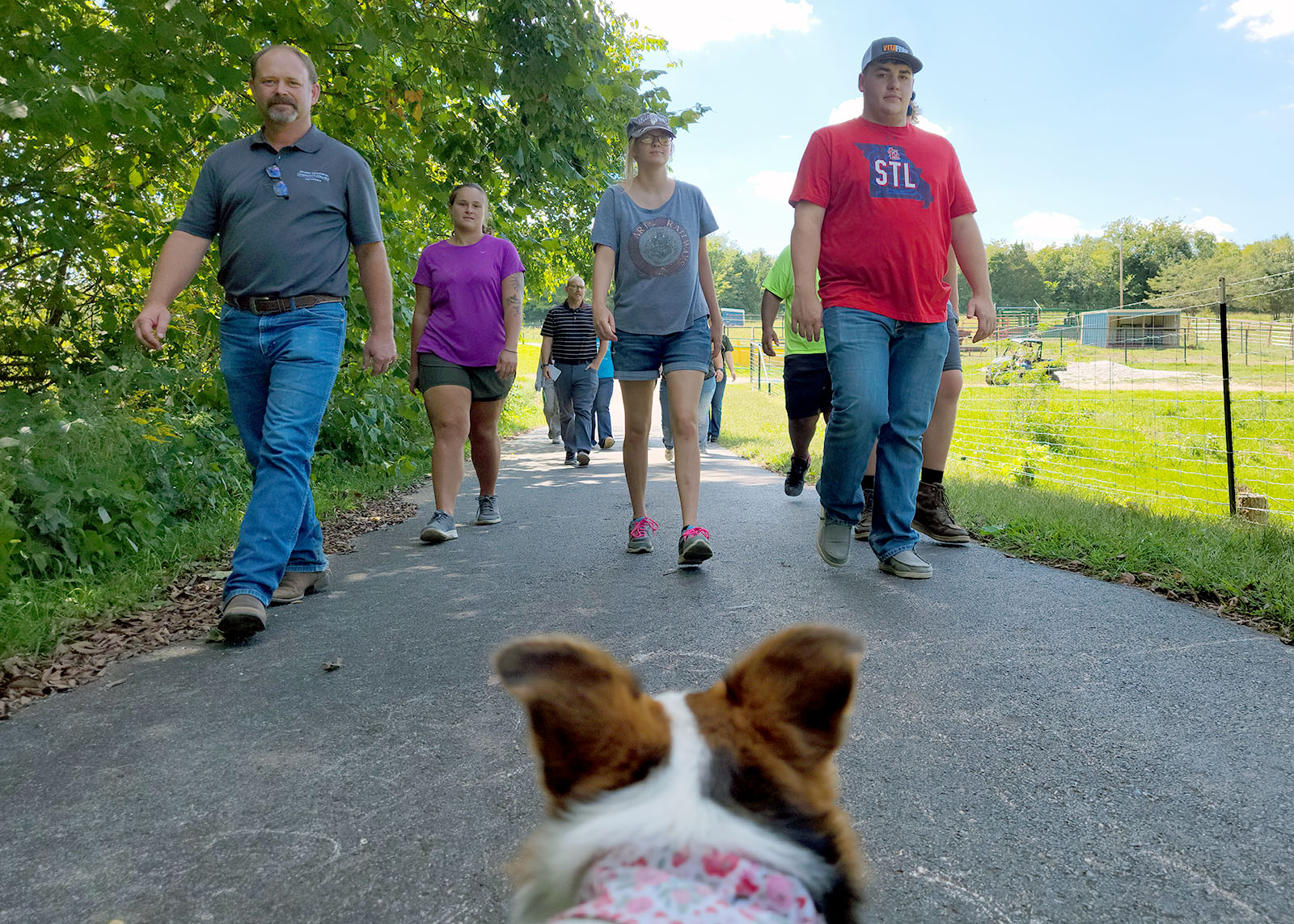
Flatness and Heather Eberlin, an agriculture instructor at OTC who specializes in plant sciences, said the increase in enrollment at OTC is directly tied to the move to the Nixa campus.
When the ag school was based in Springfield, Flatness dreaded hauling a cow to the city campus because he could imagine the headlines if it somehow wandered onto National and the Chestnut Expressway. That’s not a doomsday scenario anymore. A 2,400-square-foot greenhouse, a forest, fields of native species and several pastures filled with cattle and sheep offer on-site learning opportunities at the center.
“Being able to have the hands-on experiences that our students can get here, that is what has driven our immense growth,” said Flatness, who participates in weekly meetings about future expansion of the center and the school’s programming.
As enrollment expands, so do opportunities
The backgrounds of OTC’s current ag education students vary greatly, Flatness said. Many of them didn’t grow up on farms.
“We see a lot of people that have been to the farmers market and they've talked to a producer, and it just kind of clicks that that's something that they might be interested in,” Flatness said. Eberlin added that several students who enrolled post-Covid have expressed a desire to be more self-sufficient and sustainable.

Many come to Nixa with narrow views of what career paths are available to them, they said. According to a Purdue University study, there are about 59,400 food, agriculture, renewable natural resources and environment jobs available annually for college graduates. But Eberlin said a lot of OTC students walk through the doors with one of three outcomes in mind.
“Most of our students that come in, they either want to be a vet, or they want to be a conservation agent, or they want to have their own greenhouse,” Eberlin said. “They don’t really know the spectrum of jobs for each one of those.”
Sometimes Flatness shows his students interviews or programs he recorded from RFD-TV, which focuses much of its programming on agribusiness. When a commercial targeted at farmers or ranchers airs, he pauses the segment and asks his students to consider all the steps it takes to research, develop and sell that product.
“So you may not be the rancher that produces the end product,” he said. “But you may fit into the industry stream that produces that.”
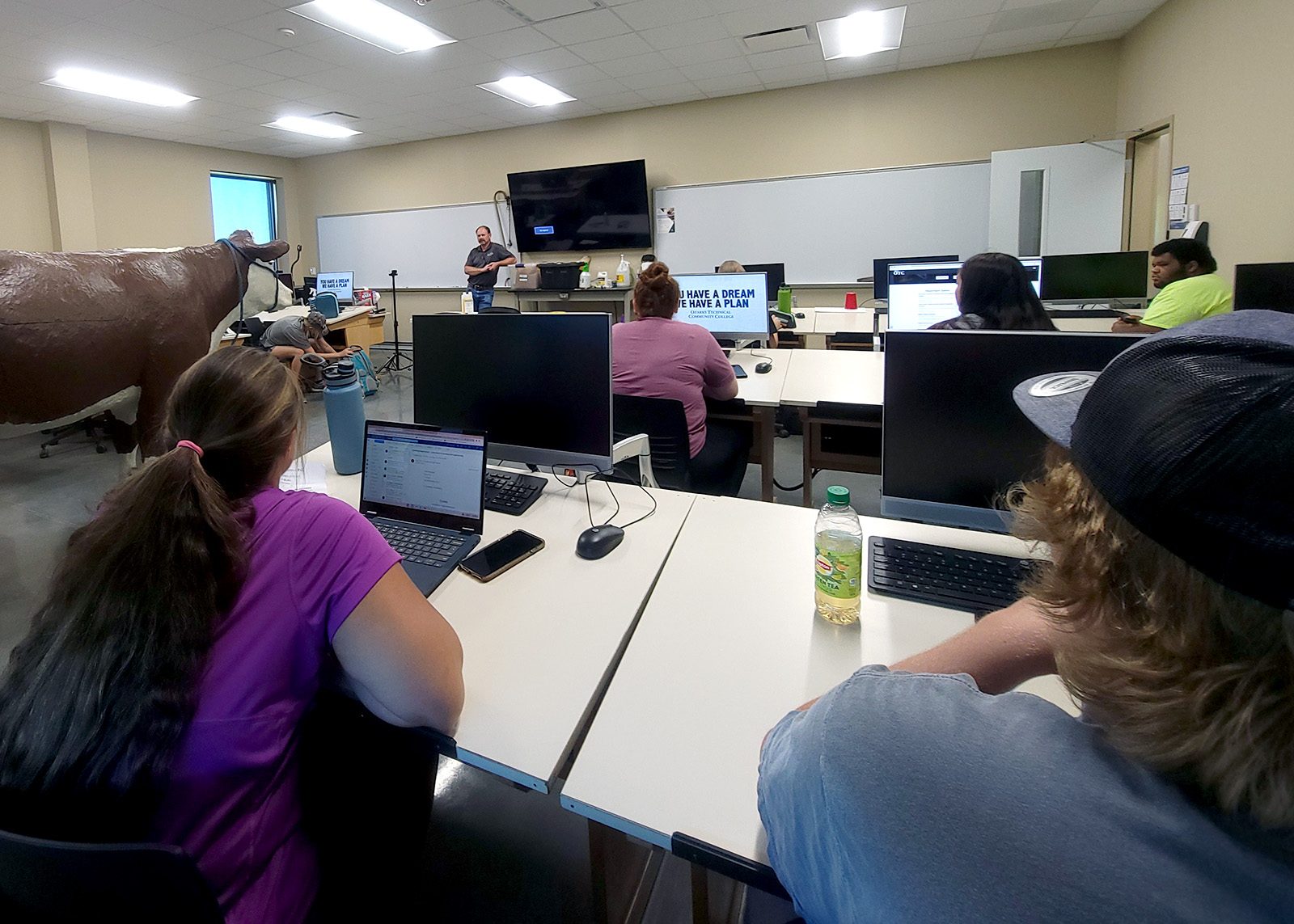
Sometimes, he said, people seek associate’s degrees to pursue lines of work at the forefront of agriculture. He said several people expressed interest over the summer in enrolling because Missouri requires agricultural drone operator licensees to have a degree. Using unmanned drones to monitor fields for infestations, soil health issues and other causes of loss can allow for more precise spraying of treatment chemicals, and analysts project a nearly $6.9 billion global market for the practice by 2030.
“We pay attention to what's going on in the industry, but the industry is changing so fast, that we can't keep up with it,” Flatness said. “And our students are just amazed at the opportunities that are out there.”
Program expands career, life possibilities, students say
The closest experience to farming Lily Suarez had before enrolling at OTC was living near an orchard in Washington state, where she grew up. After enrolling in the animal science program at OTC, her goals became clearer. She wants to homestead. In Alaska.
Over Labor Day Weekend, she flew to the 49th state and looked at land 75 miles northwest of Anchorage. It’s lakefront with a mountain view, she said, and she’s thinking of buying muskoxen from Canada, raising them on her land and selling sweaters made from their fiber.
Suarez is confident that she found a good place, because she brought a vial of soil back with her and tested it at OTC. Learning elemental information, like the importance of soil health, affirmed her decision to enroll at OTC.
“I think this is the best (program) that I could have chosen, because I know I'm going to do it throughout my whole life,” Suarez said.
Flatness said there is no type of person who enrolls at OTC. One student in a current entry-level animal science class has never owned a pet. But most students, he said, see this as a path to expanded career and life opportunities.
Madison Ware, 20, said she enrolled in the animal science program to expand her knowledge of livestock beyond her experiences with them in showbusiness. Ware is a rodeo clown with From the Arena to the Cross Rodeo Bible Camps.
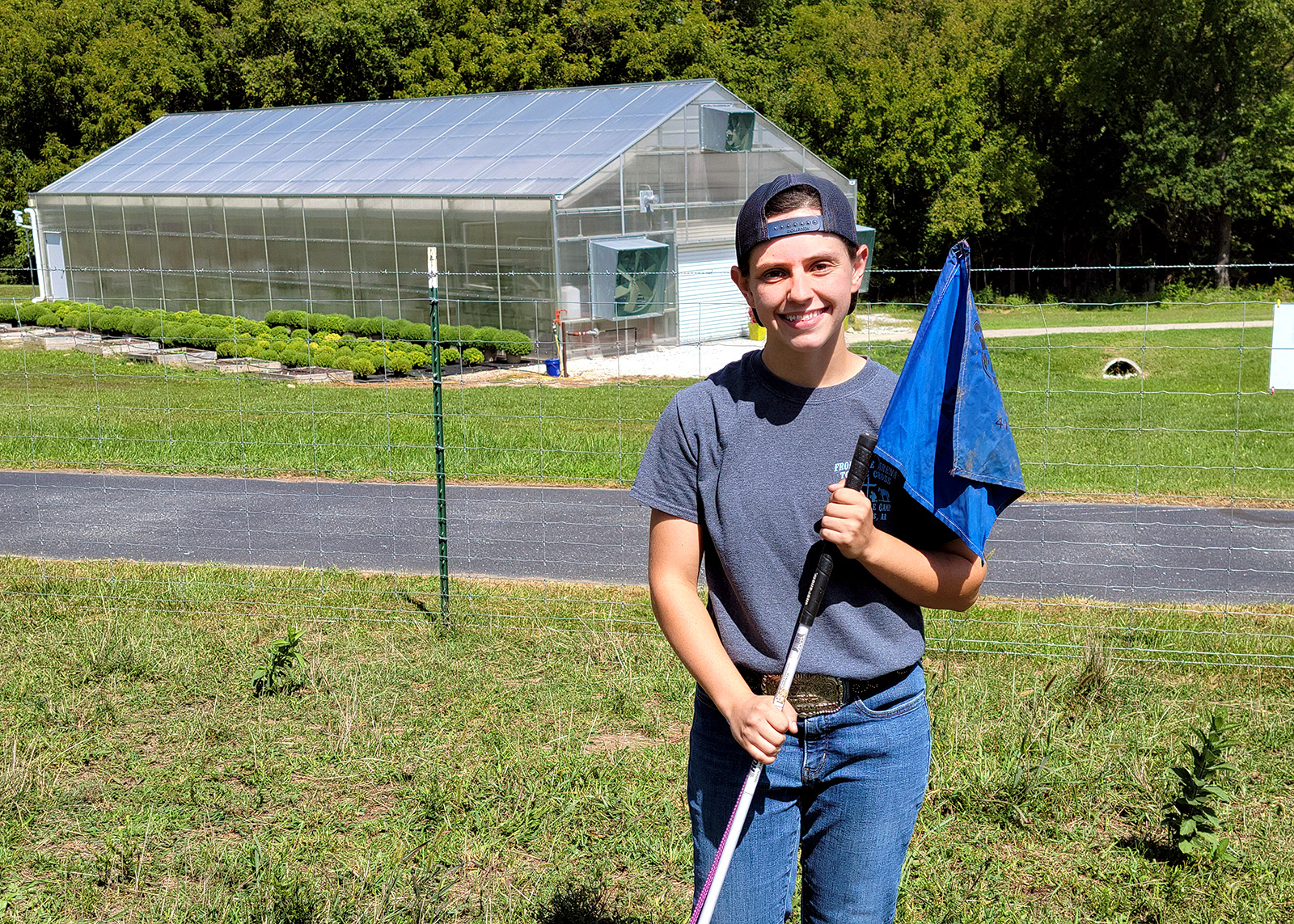
“I'm not a bullfighter,” she said. “I'm the barrel man. So I sit in the barrel, and I wait for them to get in trouble, and then I'll go get in trouble.”
Before she did that, Ware barrel raced, steer wrestled and rode bulls for three years. When you work with rodeo animals, Ware said, you’re trained to have a forward approach with them, to show them who’s boss. At OTC, she sees a bunch of calm, bucket-fed livestock and thinks rodeo animals can be treated like this.
“I want to have rodeo stock that will work like rodeo stock, but behave like this,” she said. “So it's definitely changed my outlook on what rodeo stock can be.”
Ware currently lives in Ash Grove but is hoping to move closer to Branson and keep one foot in the entertainment industry while also building up a cattle herd.
“I would like to be part of commercial ag but also be able to continue my love which is training horses and working with horses and being part of the hobby industry,” she said. “So, I'd like to do it all really.”
Ag education helps preserve farming traditions while teaching best practices
Bridget Burky first enrolled at OTC in 2013 soon after her daughter’s birth. But the fourth-generation farmer from Billings wasn’t enrolled in ag classes.
“I was in business and marketing at the time because that’s what everyone told me I had to do,” she said. Between being a new mother and working toward a degree she didn’t have any passion for, she struggled. Her GPA tanked, she dropped out and got a day job that led her daughter to call her a grouch. Last fall, Burky decided to go back to school on her terms.

“I knew that I wanted to do everything and anything ag,” she said. “I’ve always been a farm kid. I love the farm. Working a 9 to 5 job in an office made me miserable.”
After first being directed toward online courses, Burky met with an advisor at OTC who she said changed her life.
“She said, ‘Oh no, Richwood Valley is where you need to go,’” she recalled. “She’s like, ‘We’re going to take you to Nixa,’ and now Nixa is 110 percent my second home.”
Burky is one of eight women who earned associate’s degrees from OTC and are now enrolled in Missouri State University’s College of Agriculture through the OTC-MSU 2 + 2 program.
“I'd say probably about 80 percent of our students go to MSU, and (if) they completed here in two years, they can generally complete over there in two years,” Flatness said.
The eight recent OTC grads are now in a transition class at MSU together.
“It’s all ag kids,” Burky said. “Ain’t nobody that’s not ag in this classroom, which is really nice, because then we can talk cows and nobody thinks we’re weird.”

Burky still spends time at the Richwood Valley Campus, a place where she said she’s found a tight-knit family. Burky said she enrolled at OTC thinking she would get her associate’s degree and take what she learned back to her family cattle farm, and she’s done that. During the drought this summer, she said there was a week after the first cut of their pastures where the family fields looked torched. But unlike the 2012 drought, they didn’t have to buy hay for their livestock hay for the duration of the dry period. Instead, she mirrored OTC’s intensive grazing system, which rotates livestock from pasture to pasture in an effort to let grass regrow and get the most out of the land.
“Working (at OTC) during the summer and seeing how we ran the land that we’ve got here with our heifers and our sheep, I brought that back, and I was like, ‘Okay, this is what we did today. So we're gonna do this at home,'” she said. They only had to buy hay for a month.
“I'm a fourth-generation farmer, and I came back to break the curses,” she said. “Because there are a lot of bad habits and bad patterns that we still do that my grandparents did, and their grandparents did, and I want to break that curse. My husband's family's the same way, and there's a lot of things that Flatness and Eberlin both have taught me that I brought back to the farm already, even with just my associate's degree here, that we're breaking cycles. And we're improving our production where if we would have just kept going — that continuing slow loss would have been really impactful.”
In the process of plowing through her associate’s degree coursework in nine months, Burky also decided to pursue a career in ag education.
“I ended up finding a passion I didn't think I had, and that was being an educator for animal science,” she said. “And that's the end goal. My joke is, I'm taking Flatness’ (job) after he retires. With us growing, we may not have to worry about that.”
Wyatt Dill, a 19-year-old, fifth-generation farmer from Marshfield, said he enrolled at OTC in part because he qualified for the state’s A+ Scholarship Program and also because he wanted to keep up with the ever-changing best practices needed to keep a family beef cattle operation afloat. Dill is a fixture at the Greater Springfield Farmers’ Market, where he sells cuts of hormone- and antibiotic-free meat raised from start to finish at his family’s Two Bar D Beef Company.
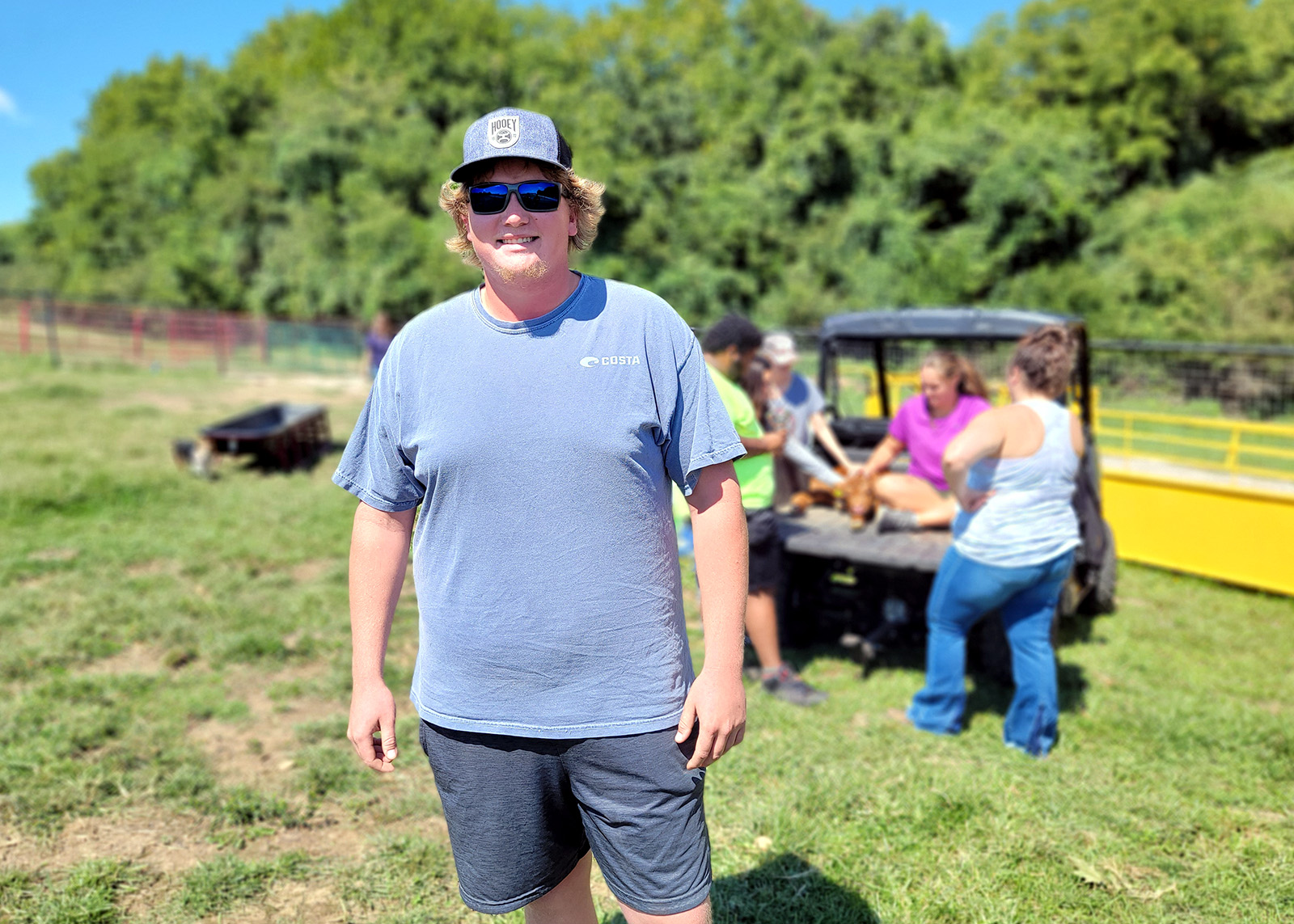
“There wasn't enough income on the farm to support me as well, so that's a new thing that's come on,” he said. “Because normally we sold them.”
Now, Two Bar D is a full circle operation, meaning cows stay on the ranch from birth through the final 200-day feeding cycle before they are killed, processed and the beef is sold locally. Flatness said during COVID, when massive slaughterhouses shut down and caused supply chain bottlenecks that led to sparse selections on grocery store meat shelves, direct-to-market, local operations like Dill’s grew in popularity. But the margins are razor-thin, which is why Dill, who banded and tagged Richie with an experienced ranchhand's precision, said he wanted to learn about nutrition and genetics information from Flatness.
“All of this is definitely not new to him, but he's learning the science behind it,” Flatness said. “He's learning more of the why instead of the how.”
In doing so, Dill said, he’s hoping to stay in a family business that began in 1820.
“Well I love it,” he said. “You know, it's what I grew up doing. It's in our blood, really, to tell you the truth. That we get up every day and start the day at six o'clock, and we usually don't get in till after dark. But it's just a way of life, I guess.”
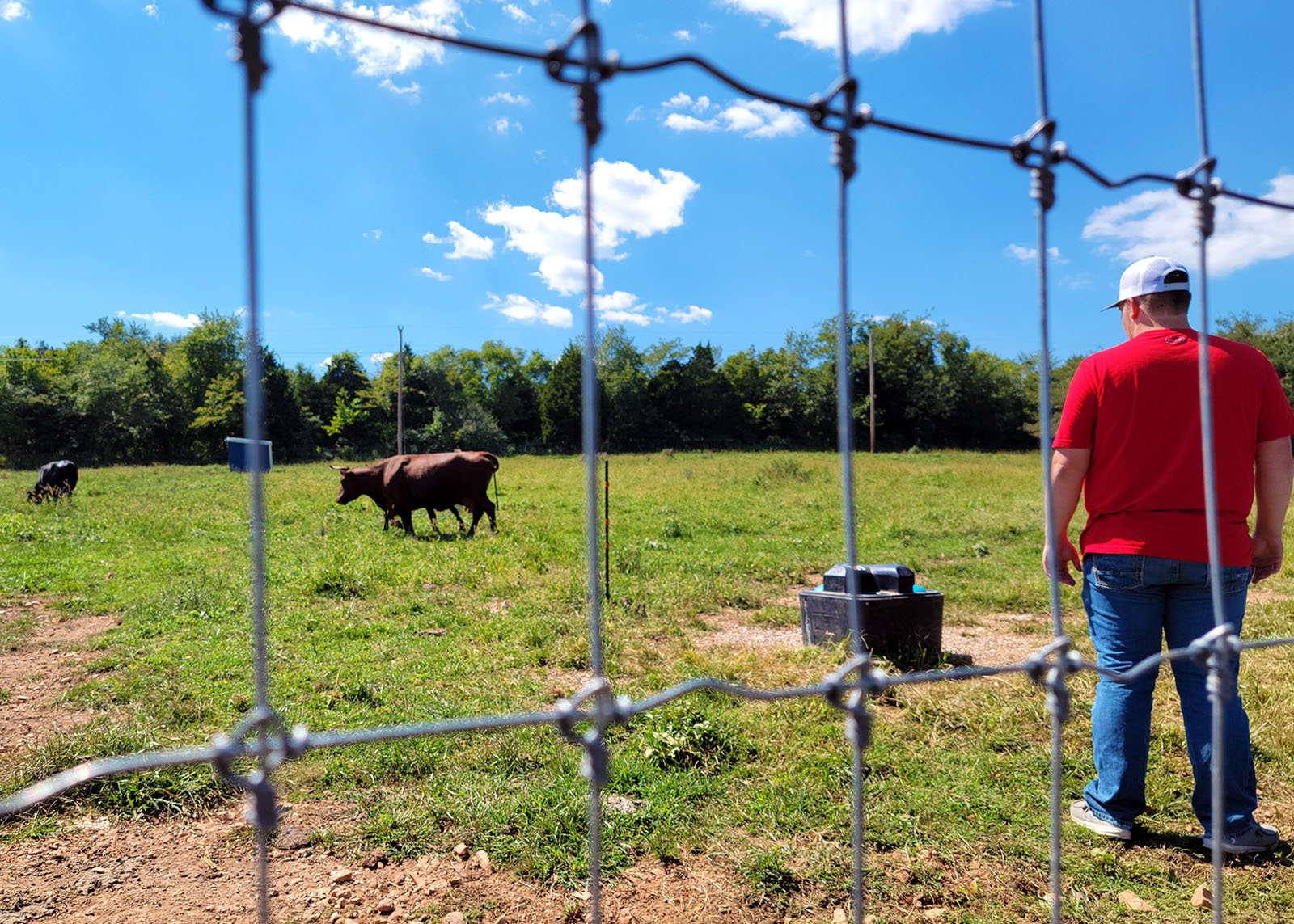
Building a bridge to agriculture opportunities in the Springfield area
The recent move to the Richwood Valley Campus helped OTC build up its ag programming while also contributing to an area-wide effort to build what educators describe as a bridge for students to explore agriculture-centric education, lifestyle and career opportunities in a region rife with them. Agriculture is the state’s top industry, and nearly 21,000 ag, agri-food, forestry and related jobs exist in Greene County alone, according to a 2021 Missouri Department of Agriculture study. Public school students in Springfield up until recently had to find their own paths into the field through, in part, extracurricular programs like Future Farmers of America.
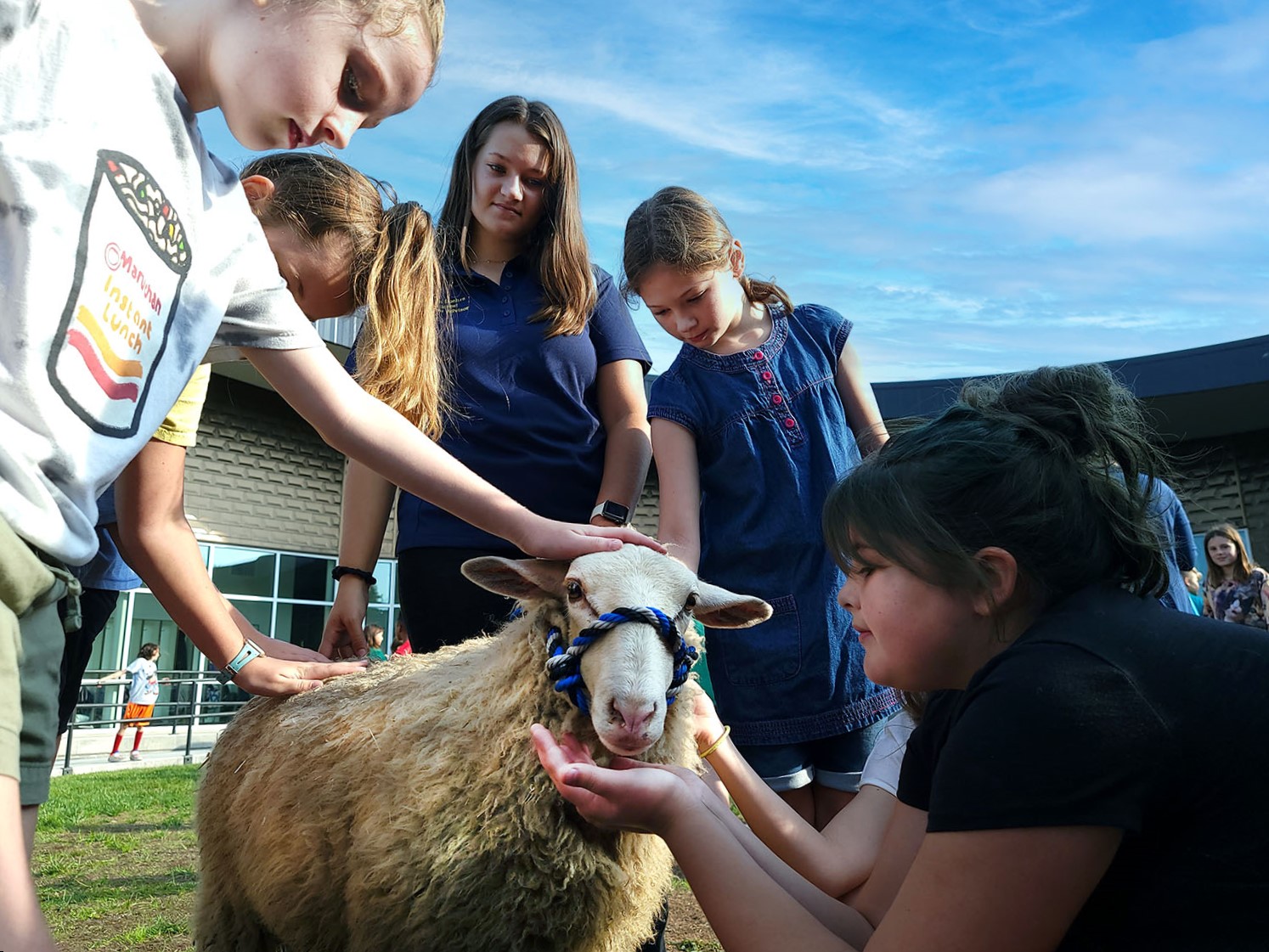
“It's something our district has been lacking for a long, long time,” said Jim Criger, a Hillcrest High School teacher who oversees the school’s FFA chapter. “All the schools around us — Willard, Republic, Ozark — you know, they've all had FFA forever.”
The bridge in Springfield now begins as early as the fourth and fifth grades for the first 100 students enrolled in the AgAcademy, which sits one pecan grove away from Missouri State University’s William H. Darr College of Agriculture. Next year, the AgAcademy will expand to include sixth graders, and Heather Zoromski, executive director of the Darr Family Foundation, which provided funding for the Springfield Public Schools project, said discussions are already underway about seventh- and eighth-grade opportunities for Springfield students.
But for the moment, she and others who advocated for the AgAcademy are taking time to marvel at what’s already happening at the school.
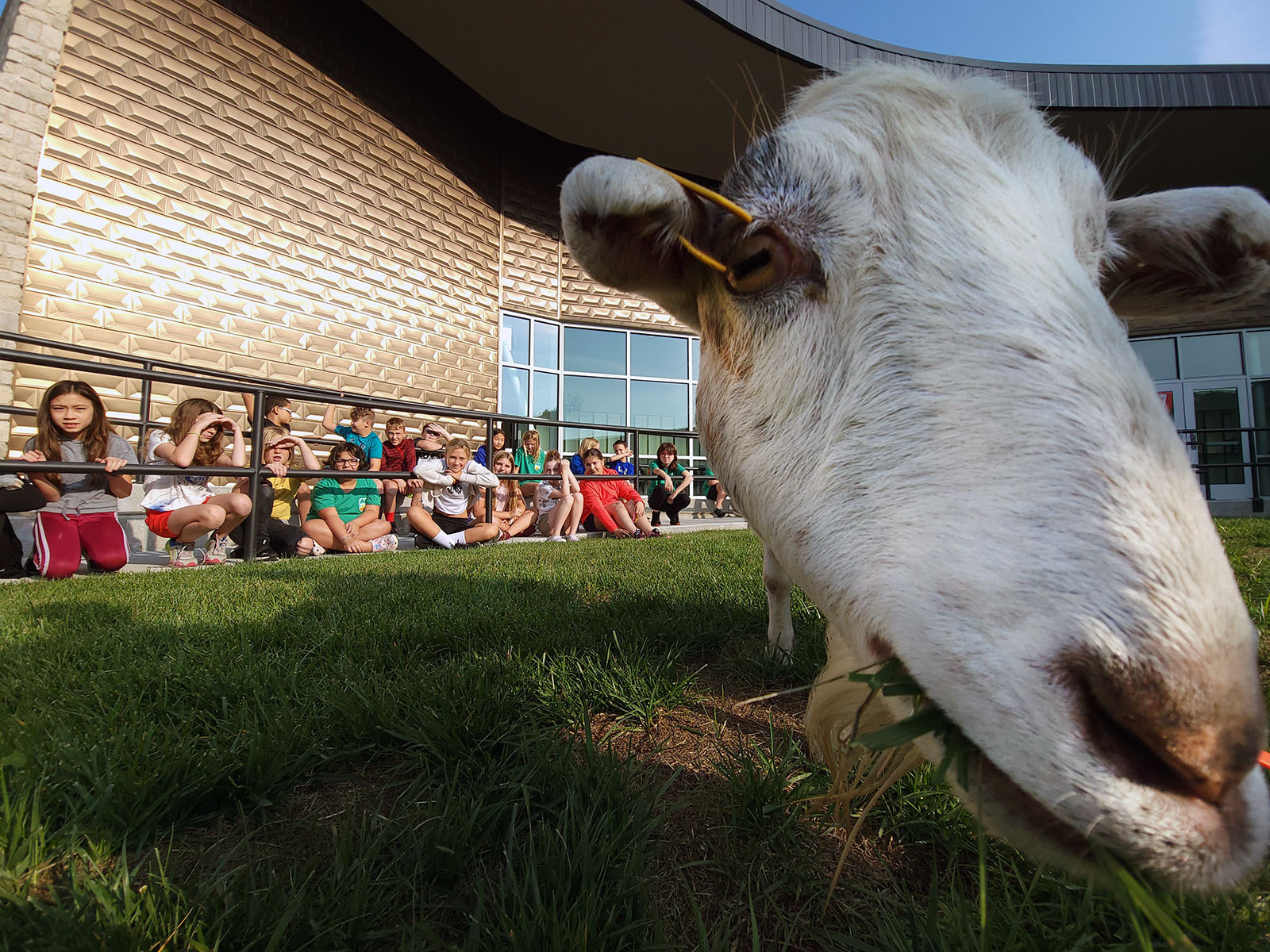
Kelsey Brabo, SPS director of choice programs, said AgAcademy students have been learning Missouri public education curriculum with an agricultural lens applied to it since their first assignment, when students harvested grapes from the MSU vineyard and learned how to make jelly with them.
Katie Kensinger; college and career readiness coordinator with SPS, visited during the FFA-AgAcademy crossover.
“I think it's exciting on both levels for the elementary students and for the high school students,” she said. “Not just the learning experience provided for the elementary kiddos getting exposed to the animals, but for the high school students and the leadership experience that they are getting. One thing that we are focused on too is producing future teachers, and this is another opportunity for us to consider that as well.”
She said the district is invested in building a pathway for students to explore an array of careers in agriculture, from entry-level positions to those that require two- or four-year degrees at OTC, MSU or elsewhere. It was a must-see moment, she said, to watch high school students share what they’ve learned with young students at the start of their paths.

